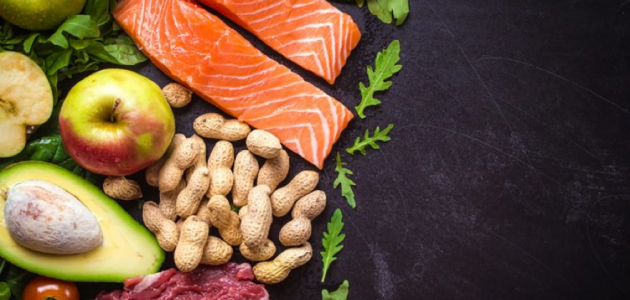
Nutrition Plan Do’s and Don’ts For Your Healthy Lifestyle
Your diet should be built on a base of low glycemic carbs, lean protein sources, and healthy fats. The elimination of processed foods and added sugars is essential to success and long term health and effectiveness.
Low glycemic carbohydrates:
- These carbohydrates do not significantly spike blood sugar and insulin
- They are higher in fiber, as well as micronutrient content
- Take longer for the body to digest, which is healthy for your gut and keeps you full
- Examples are
- Green leafy vegetables- Spinach, kale, broccoli
- Other vegetables- Squash, zucchini, peppers and onions
- Sweet potatoes (vs. white, red, or yellow potatoes)
- High fiber fruits (usually with skin)- Apples, pears, berries, bananas
- Whole grain pasta, brown rice and whole oats (not instant oats)
- Focus on the top 3 most, and occasionally add grains and oats
Lean protein:
- Lean protein is high in essential amino acids and branch chain amino acids
- These are the building blocks for lean muscles mass and help keep you full as well
- Protein has the highest thermic effect of food, so it takes the most to break down which can increase overall metabolism
- Examples are
- Grilled chicken, baked chicken (in olive oil)
- Fish (especially high omega 3 fish such as salmon)
- Ground turkey, turkey burgers, turkey sausage, turkey meatballs
- Ground chicken, chicken burgers, chicken sausage, chicken meatballs
- Eggs/egg whites (no more than 2 eggs)
- Whey protein/vegan protein
Healthy fats:
- Important for cell structure and immune health
- Thermo-regulation (helps maintain proper body temperature)
- Base for many essential hormones in our body
- Examples are
- Avocado/guacamole
- Olive oil
- Nuts (almonds, pistachios, walnuts)
- Nut butters (only ingredients should be nuts and salt)
- Butter (1 tbsp.)
Nutrition DON’TS:
- Added sugar (even foods that say low fat and fat free tend to have added sugar)
- Found in juices, sports drinks, cereal bars like “fiber one” and “Kellogg’s” and many yogurts
- Look for words like “Cane syrup, rice syrup, HIGH FRUCTOSE CORN SYRUP.” If the food has any of these, try to cut them out as often as possible
- Hydrogenated oils
- Usually found in brand name peanut butters and other fat substitutes like margarine
- These substances are unfamiliar to our body and will cause them to be stored as fat over time
- High fructose corn syrup is 20 times sweeter than sugar, and causes that much more substantial of a spike in blood sugar
Other tips and guidelines:
- Have lean protein in some way with every meal or snack
- Try your best to time your carbohydrate intake around exercise
- Creating a window of 3-4 hours is usually very effective
- Eat good fats throughout the day as snacks
- Be careful of serving size. Fat has the highest calories per gram
- If you do not pay attention to serving size, you may end up overeating
- HYDRATE! Healthy hydration habits allow for distribution of nutrients and removal of waster
- Try to drink at least your weight in kilograms in ounces of water (pounds/2.2)
- This number will increase once you begin exercising, but this is a good start
- Live a little! Once a week, have the things you enjoy
- Falling off is not the problem, it is STAYING OFF!!!











